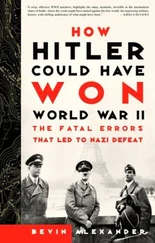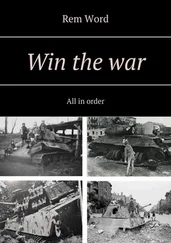1 ...8 9 10 12 13 14 ...20 In August 1914, only a month after Brownies began, Miss Richenda Gurney set up a Brownie pack for her many nieces and cousins holidaying in north Norfolk. She wore a uniform made for her by Stones & Sons, the Norwich military tailor. The day after their first meeting, war with Germany was declared and the 1st Northrepps Brownie Pack practised bandaging their uncles and the gardener, using their triangular ties as slings. During the General Strike of 1926, Brownies collected clothes for striking miners, and they would later knit blankets in squares for families hit by the Great Depression. Christine Hinkley, the daughter of a Scoutmaster in Ruislip, Middlesex, became a Brownie when she was eight: ‘I joined the Little People Six. We sang as we danced around our toadstool: “We though known as little people, aim as high as any steeple.” We played feet-off-ground games, Kim’s game, stepping-stones with newspaper. We learned how to make cups of tea and set a table for our Hostess Badge. For Homemaker Badge we kept our rooms tidy, dusted, swept, washed a tea towel and washed up. We had an annual get-together in Ruislip called Brownie Revels, held in the gardens of a very large house, with woodland around; about a hundred of us. We played lots of games in the woods, culminating in a wonderful picnic tea.’
The transition from Brownies to Guides was marked at the ‘Flying-Up’ ceremony, at which eleven-year-old Brownies who had achieved the First Class Test jumped off a bench to ‘fly up’ to Guides. The Chorlton-cum-Hardy pack had a Fly-Up on 1 November 1926. ‘Had any strangers peeped into our clubroom they would have watched one of the nicest of all ceremonies, a “Brownie Fly-Up”,’ reported their log book. ‘While the Brownie Pack stand in the Fairy Ring round their Totem, and the Guide company in Horse-shoe formation, four Brownies leave the pack and fly to Guides. Brown Owl fastens on their wings, then bids them go forward and do well. Then each Brownie gives the salute and handshake, and the whole pack give the Grand Howl.’ Less-qualified Brownies were only allowed to walk up to Guides. Christine Hinkley remembered: ‘I tried to get my Brownie Wings, but could not get enough badges. Much to my father’s disappointment, I failed my Semaphore Badge. So I could not fly up to Guides with that special ceremony.’ Christine would have been less downhearted if she had known that Baden-Powell once said, ‘It is a greater thing to try without succeeding than to succeed without trying.’
In 1920 the Princess Royal, Princess Mary, only daughter of George V, became President of the Girl Guide Association. This was no nominal title — she insisted on being properly enrolled by Olave Baden-Powell and making her Guide Promise, and she took her role seriously, travelling all over the country visiting Brownies and Guides. On May Day 1930 she found herself in a field in Kingston Maurward, Dorset, inspecting several thousand Brownies. Each pack had to welcome the Princess into a ‘Brownie Land Flower Garden’. The 1st Swanage chose to be delphiniums and poppies, with nine-year-old Irene Makin as one of two raindrops, wearing a gauze veil over her head. ‘Irene was so excited she couldn’t keep still,’ wrote her friend Audrey Pembroke. ‘Not many little girls got to meet a real live princess. Irene kept jumping about in her headdress in the hallway, and singing until her father had had enough. “If you don’t dry up,” he told her, “this little raindrop won’t be going!”’ Irene went with her pack in a charabanc. After a grand march-past, accompanied by the Dorchester town band, the Brownies danced up to the Princess Royal to the tune of ‘Pop Goes the Weasel’. They were led by the ‘Spirit of the Garden’, a sixteen-year-old Ranger dressed in white, and when each Brownie reached the princess, she had to stop and curtsey. ‘Irene found herself gazing down at a smart pair of brown lace-up shoes. Shyly she lifted her eyes, to look up through her veil at the tall figure of the Princess.’ Princess Mary was wearing her navy-blue uniform, belted at the waist, the white cords of office held up with the Guide badge on her lapel, and on her felt hat was a gold cockade. She smiled at Irene and whispered, ‘Hello.’
When Irene got home her mother asked her if she had seen the Princess.
‘Oh yes,’ said Irene, ‘she looked just like Brown Owl.’
When the girls of Herstmonceux village in East Sussex wanted to start a Brownie pack in 1934, a notice was read out in church that the first meeting would be held at the rectory the following Saturday morning. ‘Twenty little girls turned up mostly with their mothers who, when told about the uniform, shook their heads,’ remembered their Brown Owl. ‘“All right then,” I said, “we will start the pack without uniforms and think of a way of raising the funds.”’ So the would-be Brownies organised a concert, and charged a penny a peep to look at The Brownie magazine. With the proceeds, they bought a paper dressmaking pattern for sixpence and brown cotton curtain material at 9d a yard. ‘Already a dab hand at making my sisters’ party dresses from Woolworth patterns, I set about cutting out and machining twenty little uniforms. The most expensive parts were the Brownie belts, and these we persuaded the saddler to cut up out of old but well-polished leading reins. After a pathetic attempt to embroider the badges myself, we had to buy them from Guide Headquarters.’ The toadstool was made of papier mâché from old copies of The Times donated by the local rector.
Not all Brown Owls were perfect. Carol Snape was seven years old when she became a Brownie in Albrighton, near Wolverhampton. ‘My Brownie uniform was handed down from my elder sister — everything was, in spite of her being smaller than me,’ she recalls. ‘As it was rather short it showed my large brown inter-lock knickers. My brown beret soon got lost. I was always being told off by Brown Owl, who was Doctor’s wife — a very bossy lady. We assembled in the yard outside the surgery. One day she was very cross indeed because I had got ice-cream all down my front. She held me under the pump because we were going on parade in the village.’ Despite these horrors, Carol was enrolled as a Girl Guide twice. ‘I liked the enrolment ceremony so much that when we moved house, I never let on I had done it before.’
Some Brownies, such as Lucy Worthing from Sussex, felt the pressure to do Good Deeds could be too strong:
Before I was enrolled as a Brownie, my fellow candidates and I were each given a paper cat with a string tail about six inches long. We had to tie a knot in the string every time we did a Good Deed. One Good Deed a day was the recommended aim. A week later we brought our crumpled cats to the Brownie meeting and we compared knotted cats’ tails. I was proud to show Brown Owl that I’d achieved six deeds, mostly on my grandmother who lived next door. She had happily accepted my tepid cups of tea and efforts to untangle her knitting bag. I even picked her a fistful of buttercups from the verge. But one girl had surpassed us all. Molly had added an arm’s length of string to her cat’s tail, all tightly knotted. ‘How did you do it?’ we asked in awe. ‘Mummy helped me,’ she gloated. ‘She found me lots of good deeds to do, like cleaning the silver napkin rings, and tidying the fish fork drawer. Daddy gave me his best shoes to polish.’ I felt that this did not count — you had to spot your own Good Deeds, and anyway being quite so competitive annulled them altogether.
From the start, Baden-Powell made it clear that in addition to doing Good Deeds, it was the duty of every Brownie and Guide to ‘Keep Smiling’. To illustrate this, he told the story of Francis Palmer. ‘He was a very young boy belonging to the Wolf Cubs of the 18th Bristol troop, who was knocked down by a motor-car. His left leg was broken in two places, and the side of his face badly cut. The boy was naturally in great pain; but to the astonishment of the doctors and nurses, never cried or complained. One of the doctors asked him why he was so brave, and his answer was: “I am a Wolf Cub, and so must not cry.” So whenever you break your leg just smile if you can. If you cannot — well — then grin!’
Читать дальше












